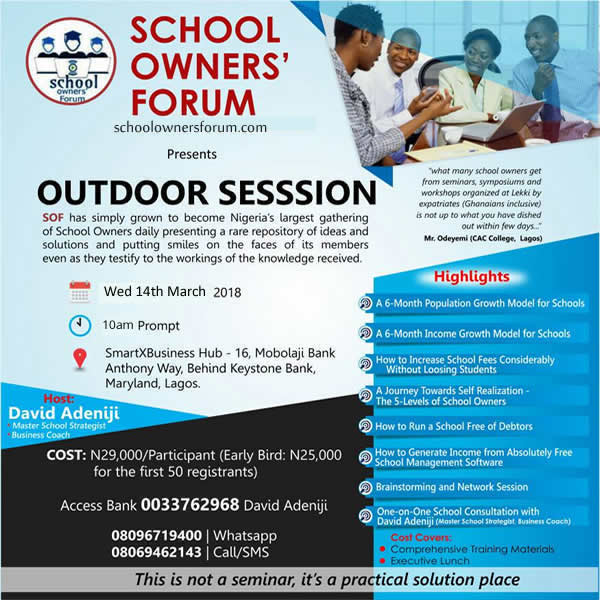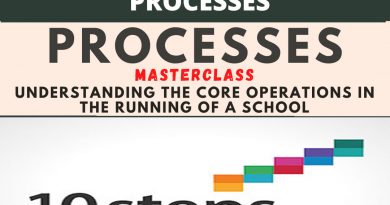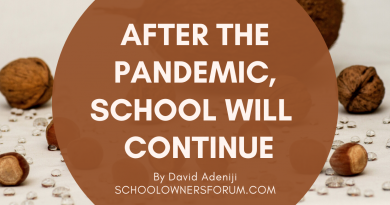A 6-MONTH POPULATION GROWTH MODEL FOR SCHOOLS
A 6-MONTH SCHOOL POPULATION GROWTH MODEL FOR SCHOOLS
By David Adeniji – 08069462143 – adenijidav@gmail.com – Thinkage Consulting
POPULATION GROWTH STRATEGIES
| S/N | Strategy | Estimated Growth |
| 1 | Parents’ Consultancy Strategy | 15 |
| 2 | Environmental Scanning and Conversion | 5 |
| 3 | The Incentive Strategy | 15 |
| 4 | Prospective Students’ Empowerment strategy | 10 |
| 5 | Community Project Strategy | 5 |
| 6 | Entry Point Target | 5 |
- PARENTS’ CONSULTANCY STRATEGY
Research has shown that schools get more costumers from existing ones. However the best way to maximize this concept is to position the true value of the school in the minds of the parents, and then raise it even higher, showing them why they should even partner more with the school in populating it. Paying their school fees promptly may not just be enough. Consciously bringing in more parents will be even more beneficial to them.
HOW:
- The school sets up separate appointments with the parents (maybe in groups of 5’s, 10’s or 20’s depending on the overall parent population). The school prepares invitation letters to be sent to parents. The letters bear the school’s brand. This strategy may look like the usual PTA forum, but it’s different. Its aim is to further break down the forum to get more personal with the parents and hence force deeper participation.
- School Officials (members of staff specially trained for this purpose) then meet each parent sub-group. The officials interact with the parents with the school’s already developed, tested and proven value-raiser questions, comments and talks.
- The school builds more rapport and follow-up with calls and Bulk SMS (eg. esmspro.com) to make sure parents actually bring new parents or at least give referrals for the school’s marketing team to work on.
- By this, we’re unconsciously recruiting the parents into the school’s marketing team.

- ENVIRONMENTAL SCANNING AND CONVERSION
- Surely, the environment around us houses the parents and students we need as costumers. A strategic (not conventional) combing of our immediate environment definitely turn out our targets. This strategy, is the most commonly employed marketing strategy, but certainly not the most effective. The output is not easily measurable since most of our competitors use the same method. It works well when combined with one or more of the other strategies. The efficacy of this strategy (and other strategies) will begin to be measured from the number of those who turn up for enquiries at the school
HOW:
- The school’s marketers do strategic canvassing of the environment, street to street.
- The school then follows up with strategically targeted calls and Bulk SMS (eg. esmspro.com) to make them come for more serious enquiries from the school.
- The school trains an official (most likely, the receptionist) that would be responsible for receiving prospective parents who turn up for enquiries
- The school shall also put in place some simple and cost effective advert objects or mechanisms to improve the school’s physical appearance, both from outside and inside.
- THE INCENTIVE STRATEGY
The incentive strategy is also called the ‘bait’ strategy. An exciting incentive scheme is developed as reward for any stakeholder (teacher or parent) who brings a child into the school. This strategy if mishandled can make the school loose income unnecessarily. So the incentive may not be strictly monetary in value. The school management will develop a model for going about this. The stakeholders basically needed for this are the parents and teachers.
HOW:
- The school comes up with the reward framework for rewarding every single new student registered into the school through a teacher or parent. The framework will not give room to double rewarding, mis-rewarding or rewarding-for-nothing, the framework must be able to recognize if truly a student came through a stakeholder or not.
- The school trains the staff for this specific task, making them understand clearly, the benefits of this framework
- The school also speaks to parents either during the PTA meeting, End-of-Session Party, or during the parents’ consultancy strategy sessions described in 1(b) above
- PROSPECTIVE STUDENT EMPOWERMENT STRATEGY
The most important stakeholder in every education system are those for whom the system is built, the learners – the Students. We have a couple of them in school already, but we need more. And they are all living in our immediate environment. Some of them are not in school yet and some are planning to change their schools. Although the decision to enroll depends on their parents, 90{8dc6446a23d5fee9fe0dacdc1858f499f404f1a40e840569a9724d1a28aa4e98} of parents don’t do so against the children’s wish. So bringing them into the school and showcasing what we really have will to a Large extent influence their choice
HOW:
- The school comes up with a 3 or 4-week student empowerment Programme to be run during the holidays. The programme will not be for profit making, so, it may be free or very cheap. We can develop a holiday programme around our ICT facility at a little fee, to woo over students of other schools whose ICT level is nothing near our own.
- The vocational skills to be imparted in the Programme will be those already possessed by the teachers
- The school Prints handbills whose design will be directed by the school.
- During the Programme, the students would be developing interest in the school and her wonderful array of skillful instructors and our ICT facility among other facilities. The school then intimates participants about advantages of enrolling at the school, and at the end of the programmes, lots of students are wooed with slight price reduction offers (as much as the school can offer)
- COMMUNITY PROJECT STRATEGY
If the school was not actually accepted in the minds of occupants of the environment, there wouldn’t have been any business so far, because there’d be no good image. So, let’s boost our image in the community, making them see that our primary aim is not to make money out of the community, but to add value to the community. Whatever helps us do so will make them accept us more. If properly handled, a free-will community project (that will not actually cost the school any serious spending) will bring new customers into the school.
HOW:
- The school scans the environment and comes up with the most suitable and low cost community project(s)
- The project will not be capital, will not cost much money, and will aim at using the resources the school already has, but will be aimed at benefitting the environment and not really the school directly.
- The project will be carried out within a day, or two –outside the premises of the school.
- During the project, the schools banners, handbills and other visible forms of advert will be boldly positioned to catch people’s attention.
- The school would have trained the school staff on how to exploit the curiosity of passers-by or excited individuals for possible enrolment
- The school will direct and supervise the project
- ENTRY POINT TARGET This strategy helps to populate the JSS1 class of secondary section very fast. There are obviously primary schools in the vicinity of the new school whose school fees are in the same range with ours but do not have secondary schools. Our professionalism is employed in winning over the hearts of the school owners to woo their primary school leavers and their parents to our newly established school. This requires no easy marketing. The competition is keen. Our edge however is that 90{8dc6446a23d5fee9fe0dacdc1858f499f404f1a40e840569a9724d1a28aa4e98} of schools do not employ experts to market their school. They rather use conventional methods
HOW:
- The school’s marketing consultants visit primary schools in the new school’s vicinity
- These school owners are convinced at encouraging their school leavers to enroll in our school in the forthcoming academic session.
- Incentives might be necessary for these prospective customers.
- Strategic Common Entrances Examinations are then conducted (by the school officials) in our new school.
- The follow-up thereafter is the cutting edge of this strategy.
Combination Effect
| Combination of | Expected Drop in expected increment |
| 2strategies | 10 |
| 3strategies | 20 |
| 4strategies | 30 |
| 5strategies | 40 |
*So, 5 of strategies are used for instance, we may not have 50% growth as expected from page 1, there will be a (40% of 50% which is 20%), leaving us with a possible 30% growth (50% –
20%)
PERFORMANCE MEASUREMENT
Performance will be measured in both short-run (the immediate next term), and long run (throughout the session)
NB: If you however need more help with the implementation of these strategies or you need more of our consultancy or various trainings needed to execute these strategies effectively, please call the project coordinator on 08069462143, email: adenijidav@gmail.com. Thanks
REMEMBER THIS:
I WILL BE TALTING MORE EXTENSIVELY ABOUT EVERY TOPIC EVER DISCUSSED ON THE SOF PLATFORM IN OUR FORTHCOMING SOF OUTDOOR SESSION. IT WILL HOLD FEBRUARY 2018. PLEASE KEEP INVITING MORE SCHOOL OWNERS TO JOIN THIS PLATFORM. AT THE SOF OUTDOOR SESSION, THE FOLLOWING SHOULD BE EXPECTED
- Networking Sessions
- Brainstorming Sessions
- Strategic meet-ups with School Resource
Suppliers
- Advanced Innovation and School Marketing Sessions
- Advanced Educational technology discovery sessions
- Full exposition on all subjects ever discussed on the platform and more
- School Consultancy
- Introduction to the Thinkage Complete School Growth Strategy
- Practical hands on Training for moving from one level to another
- Introduction to the smartest School Management Software and Mobile App



